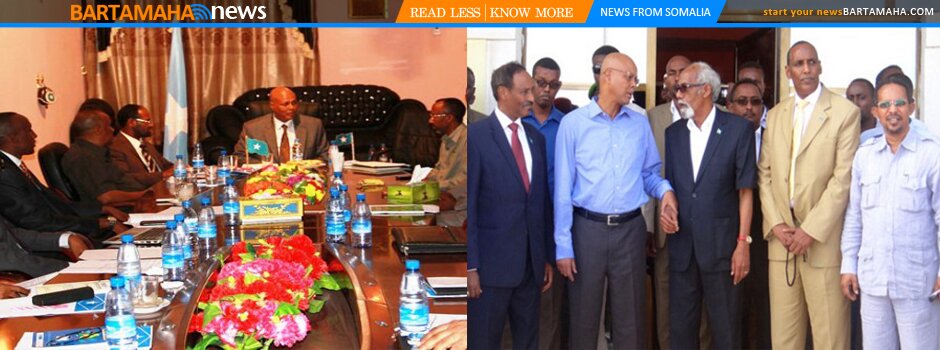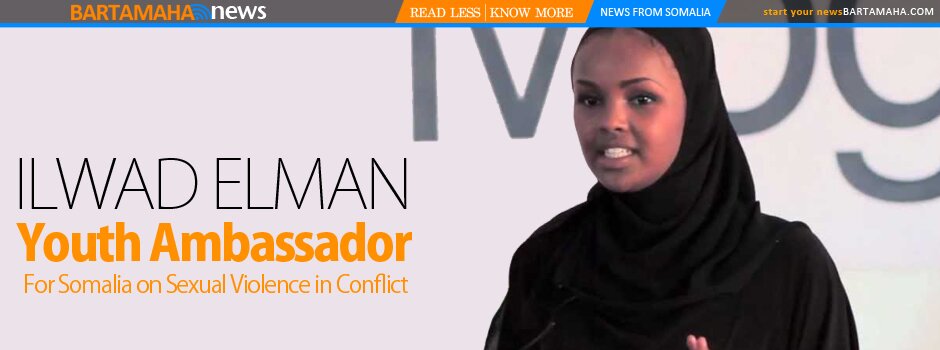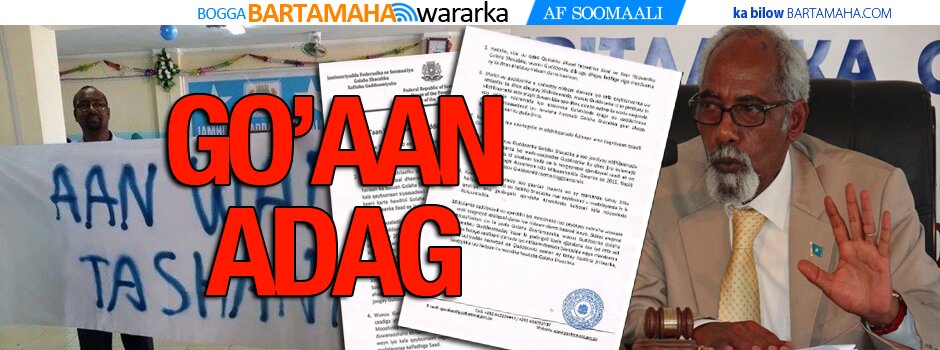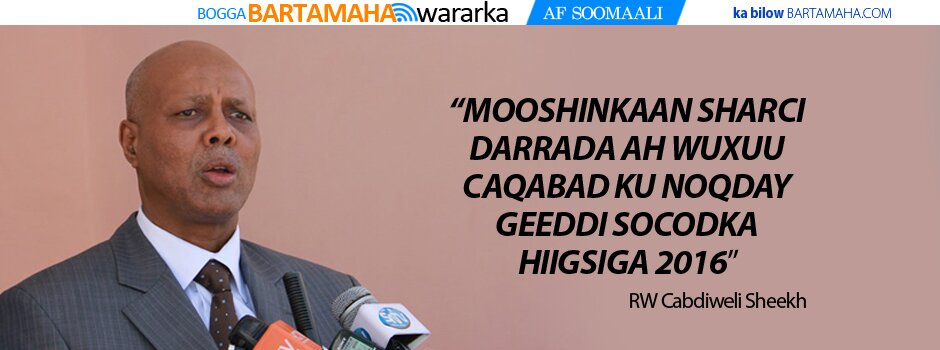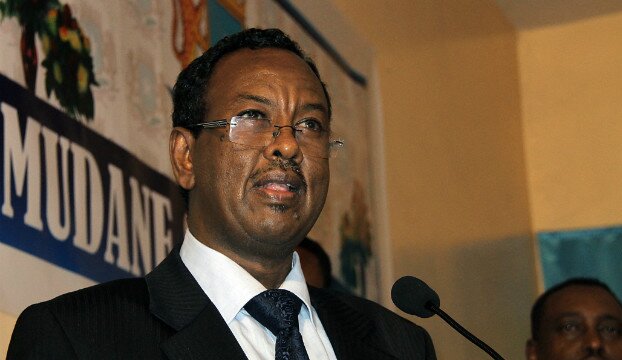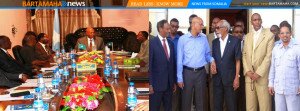Two Decades and Counting but Stability still eludes Somalia

Bartamaha (Nairobi):-The fighting for control of Somalia is now between hardline Islamists and the more moderate factions within the government, writes PATRICK GATHARA
Over the course of nearly two decades, the civil war in Somalia has morphed from a fight between rival warlords for the governance of the country into a battle for the soul of the nation.
While the northern region has experienced a degree of stability, the south is engulfed in a conflict pitching the forces of national reconciliation, represented the Transitional Federal Government, and hardline, Al Qaida-inspired Islamists.
Following the withdrawal of Ethiopian troops and election of the new Islamist leadership in early 2009, the fighting has now shifted into a struggle between hardline Islamist factions and the more moderate factions within the government. Crucial dates:
26 January 1991: An alliance of rebel groups overthrows President Siad Barre who flees to the south of the country.
28 January 1991: Ali Mahdi Muhammad declares himself president of an interim government causing a split in the United Somali Congress. Violence ensues between his followers and those of General Muhammad Farah Aideed.
18 May 1991: Somaliland secedes and declares its independence.
July 1991: Aideed boycotts a peace conference organised by Djibouti President Hassan Gouled Aptidon. The conference resolves to recognise the interim government pending elections.
January 1992: With Somalia effectively divided among warring clans and Mahdi’s and Aideed’s followers fighting for control in Mogadishu and the south, the UN imposes an arms embargo on Somalia.
14 February 1992: UN-sponsored ceasefire is reached that leads to the cessation of heavy artillery engagements although violence continues. Two months later, the UN Security Council establishes the United Nations Operation in Somalia (UNOSOM I).
April 1992: Ex-president Barre attempts to regain control of Mogadishu but is repelled and flees to Kenya. Opposition to his presence there forces him to move to Nigeria.
14 September 1992: The UN security personnel arrive in Mogadishu. However, continuing disagreements among Somali factions on the UN’s role make the effective deployment of UNOSOM countrywide impossible.
October 1992: Warring factions attack UNOSOM forces controlling the airport and shell ships carrying food as they attempt to dock.
3 December 1992: The UN accepts a US proposal to send a multinational force, the Unified Task Force (UNITAF) to protect food shipments.
9 December 1992: Mahdi and Aideed agree to a ceasefire after the first UNITAF troops arrive in Mogadishu. The ceasefire fails to hold and a month later, the country is back at war. By year’s end, at least 350,000 people have died as famine sweeps the south of the country.
March 1993: A peace conference in Ethiopia establishes a Transitional National Council.
4 May 1993: UNITAF is replaced by the second UN Operation in Somalia (UNOSOM II).
5 June 1993: Aideed’s forces ambush Pakistani UN soldiers killing 24.
17 June 1993: The UN orders the arrest of Aideed, following which the Somali situation becomes a conflict between the UNOSOM and Aideed’s militia.
3 October 1993: Two US Black Hawk helicopters are shot down. In the ensuing battle, 18 US troops, one Malaysian soldier and over 500 Somali civilians are killed.
7 October 1993: The US announces it will withdraw all its troops by the end of March 1994. Within two years, all UN peacekeepers leave Somalia.
2 January 1995: Barre dies of a heart attack in Lagos.
15 March 1995: Two weeks after the UN withdrawal, Aideed declares himself president. His faction splits when the main financier, Osman Hassan Ali Atto, claims the chairmanship of the SNA.
4 August 1996: Aideed dies from wounds sustained in a gun battle. His son, Hussein Mohamed Farrah Aideed replaces him as leader of the SNA and president.
3 January 1997: Leaders of the SSA and Osman Ali Atto meeting at the Ethiopian resort of Sodere create a 41-member National Salvation Council (NSC), with a rotating chairmanship, and charges it with the responsibility of forming a transitional government.
22 December 1997: Following the Sodere Agreement, all parties except two at a conference in Cairo, Egypt in December sign the so-called “Cairo Declaration†which provides for a 13-person council of president, a prime minister, and a national assembly.
30 March 1998: Following the failure of the Cairo Declaration, Mahdi and Hussein Farrah Aideed agree to a joint administration for Mogadishu ending seven years of fighting.
23 July 1998: Abdullahi Yusuf is elected President of Puntland by elders.
August 13 2000: Over 2,000 Somali leaders gathered in Djibouti form a central government, the Transitional National Government (TNG), with a new 225-member parliament –the first after a decade of internecine warfare.
26 August 2000: Abdiqasim Salad Hassan is elected President of Somalia by the clan/faction representatives. Some warlords refuse to recognise the TNG and instead form the rival Somali Reconciliation and Restoration Council (SRRC).
July 2001: Abdullahi Yusuf’s tenure as President of Puntland expires, but he refuses to step down.
14 November 2001: Jama Ali Jama is elected president of Puntland. Ethiopia sends troops to help Abdullahi Yussuf regain power, which he does after six months.
3 May 2002: In Somaliland, which has been spared most of the bloodshed, President Egal dies in a military hospital in South Africa. His deputy, Dahir Rayale Kahin, is inaugurated as the new leader, pending elections.
29 June 2002: The TNG formally asks the UN Security Council to send an armed force to Somalia.
October 2002: The Somalia National Reconciliation Conference (SNRC) opens in Eldoret, Kenya with 600 representatives who sign a declaration on cessation of hostilities. In February 2003 it moves to Mbagathi, where the number of delegates is reduced to 366.
14 April 2003: Dahir Rayale Kahin is elected president of Somaliland. Violence erupts after the opposition rejects the results. The Somaliland constitutional court later endorses Kahin’s victory.
5 July 2003: At the SNRC, the SRRC and TNG settle their differences. The TNG’s three-year mandate officially ends a month later, but it continues pending the creation of a successor administration.
29 January 2004: An agreement is reached to form a new Transitional Federal Government (TFG), the first of its kind to include all armed groups.
29 August 2004: Following two years of discussions in Kenya, the Federal Transitional Parliament is formally inaugurated.
10 October 2004: Parliament elects Yusuf as interim president of the TFG.
6 January 2005: The AU approves plans to put peacekeepers in Somalia.
February 2006: As a reaction to the increasing power of the Islamic Courts, who in the absence of state institutions have become the main judicial system in addition to offering limited policing and educational services, a group of Mogadishu based warlords form the Alliance for the Restoration of Peace and Counter-Terrorism(ARPCT) which is secretly funded by the US government.
26 February 2006: The Somali Parliament holds its first session inside Somalia, in the city of Baidoa.
6 June 2006: The United Islamic Courts (ICU) drive the warlords out of Mogadishu and begin a rapid consolidation campaign to link up with courts in other cities.
20 July 2006: US backed Ethiopian troops invade Somalia to prop up the TFG in Baidoa.
August 16 2006: The TFG calls for AU peacekeepers to be deployed in the country.
6 December 2006: The UN Security Council authorises the Intergovernmental Authority on Development (IGAD) and the AU to deploy an 8,000 strong peace force in Somalia.
29 December 2006: After several successful battles in Baidoa, Bandiradley, Beledweyne, Jowhar and Jilib, TFG and Ethiopian troops enter Mogadishu.
1 January 2007: The TFG declares that “the warlord era in Mogadishu is over†and gives civilian groups and businesses three days to disarm. ICU forces abandon Kismayo and retreat to the Kenyan border.
Following their defeat, the ICU splinters. Some of the more radical elements, including Harakat al-Shabaab Mujahideen (“Movement of Warrior Youth†more commonly known as al-Shabaab), regroup to mount an insurgency.
12 January 2007: Warlords agree to disarm their militias and direct their members to apply to join the national security forces. The next day parliament passes a three-month emergency law allowing President Yussuf to rule by decree.
6 March 2007: The African Union Mission in Somalia (Amisom) deploys its first batch of peacekeepers in Mogadishu.
15 July – 30 August 2007: More than 3,000 people from all of Somalia’s regions and clans as well as the diaspora participate in a National Reconciliation Conference convened by the TFG in Mogadishu. Islamists schedule their own conference in the Eritrean capital of Asmara where they agree to fight the TFG under the banner of the Alliance for the Re-liberation of Somalia (ARS).
December 2007: Following the withdrawal of Ethiopian troops from the town of Guriel, the ICU and al-Shabaab control half of Kismayo and half the districts of Mogadishu, totalling around 80 per cent of their former territories.
9 June 2008: The TFG and a faction of the ARS, led by Sheikh Sharif Sheikh Ahmed, sign a peace agreement providing for a 90-day ceasefire and the expansion of the parliament. They ask the UN to send an international stabilisation force and call for the withdrawal of Ethiopian troops.
22August 2008: Al-Shabaab conquers Kismayo. They impose a strict form of Sharia, stoning to death Aisha Ibrahim Duhulow, a 13-year-old rape victim, on charges of adultery. They also destroy four Muslim shrines containing the graves of religious personalities honored by the Sufi sect. Following the desecration, the moderate Islamist group Ahlu Sunna Waljama’a takes up arms against them.
December 2008: Ethiopia announces it will withdraw its troops.
29 December 2008: Yusuf resigns as President of Somalia.
29 January 2009: The Islamists take Baidoa, the seat of the Transitional Federal Parliament, as MPs flee to Djibouti.
31 January 2009: Sheikh Sharif Sheikh Ahmed is elected President of Somalia in Djibouti. Al-Shabaab insurgents vow not to recognise the new administration and attack the AU peacekeepers.
4 February 2009: Four Islamist groups merge to create Hisbul Islam and declare war on the TFG and Amisom.
22 February 2009: A double suicide attack on an AU base in Mogadishu kills 11 Burundian soldiers and wounds 15.
6 May 2009: Al-Shabaab declares it will continue the war even if Amisom withdraws. Five days later, rebel forces take over most of the capital but fail to overthrow the government.
22 June 2009: President Ahmed declares a state of emergency as Ethiopia announces it will not intervene without an international mandate.
17 september 2009: 17 Amisom troops are killed and 29 wounded in a suicide attack on their headquarters in Mogadishu.
1 October 2009: The alliance between Hisbul Islam and al Shabaab is broken after the latter refuses to relinquish the administration of Kismayo where the two groups had previously agreed to share power. After a fierce battle, Al-Shabaab takes control of the town.
3 December 2009: A suspected al-Shabaab suicide bomber kills 25 people during a graduation ceremony for Banadir University.
15 March 2010: Ahlu Sunna joins the TFG, taking control of five ministries, in addition to diplomatic posts and senior positions within the national security apparatus.
————–
Source:- theeastafrican.co.ke
By By Patrick Gathara
Comments
comments
 Calendar
Calendar






